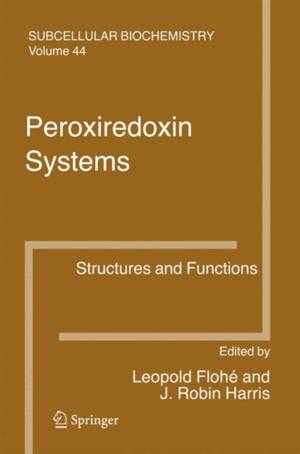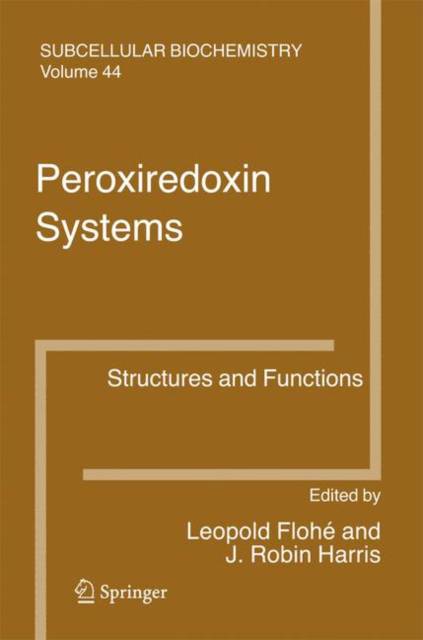
- Afhalen na 1 uur in een winkel met voorraad
- Gratis thuislevering in België vanaf € 30
- Ruim aanbod met 7 miljoen producten
- Afhalen na 1 uur in een winkel met voorraad
- Gratis thuislevering in België vanaf € 30
- Ruim aanbod met 7 miljoen producten
Zoeken
Peroxiredoxin Systems
Structures and Functions
€ 279,45
+ 558 punten
Omschrijving
A volume within the Subcellular Biochemistry series is an appropriate setting for the first multi-author book devoted to the new family of antioxidant and cell signalling proteins, the peroxiredoxins. Within the antioxidant and cell signalling fields, even the existence of the peroxiredoxins has yet to be appreciated by many; with this book we aim to rectify this situation. We have tried to select diverse chapter topics to cover relevant aspects of the subject and to persuade knowledgeable authors to contribute a manuscript. As almost inevitable, a few authors let us down by failing to respond, others could not submit a manuscript in time for personal reasons. These unfortunately were two of the pioneers, Earl Stadtman and Sue Goo Rhee, but we appreciate that they communicated a lot of details that helped us to reconstruct the early phase of peroxiredoxin enzymology. We have thus compiled a book that competently covers the peroxiredoxin field from its beginnings through to currently relevant topics. In the introductory Chapter 1 we provide a short historical survey of the subject, based upon the early structural and enzymic studies on peroxiredoxins, and then lead into some of our current personal interests, such as the likely continuing contribution of transmission electron microscopy (TEM) for the study of high molecular mass peroxiredoxin complexes and the association of peroxiredoxins with other proteins, and the targeting of drugs against microbial peroxiredoxins, as future therapeutic approaches.
Specificaties
Betrokkenen
- Uitgeverij:
Inhoud
- Aantal bladzijden:
- 408
- Taal:
- Engels
- Reeks:
- Reeksnummer:
- nr. 44
Eigenschappen
- Productcode (EAN):
- 9781402060502
- Verschijningsdatum:
- 5/09/2007
- Uitvoering:
- Hardcover
- Formaat:
- Genaaid
- Afmetingen:
- 165 mm x 238 mm
- Gewicht:
- 839 g

Alleen bij Standaard Boekhandel
+ 558 punten op je klantenkaart van Standaard Boekhandel
Beoordelingen
We publiceren alleen reviews die voldoen aan de voorwaarden voor reviews. Bekijk onze voorwaarden voor reviews.










